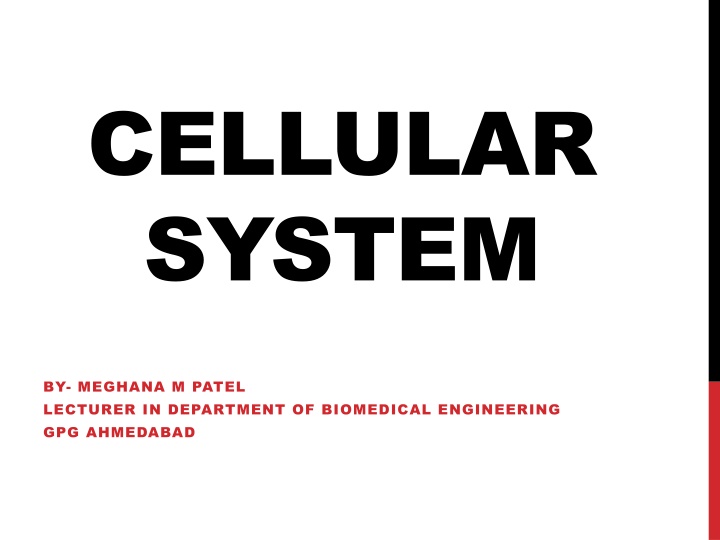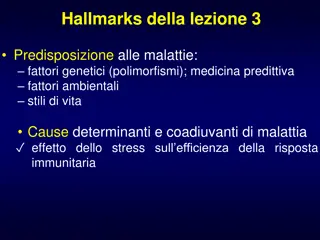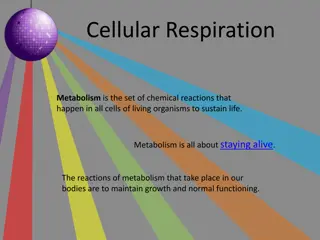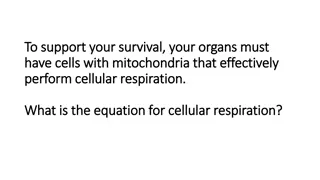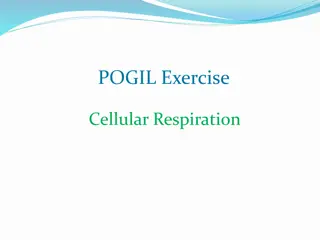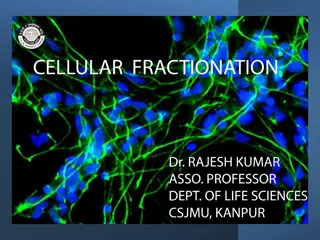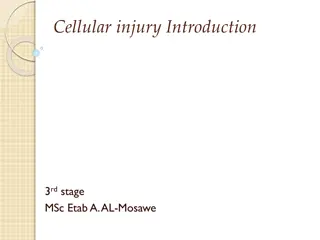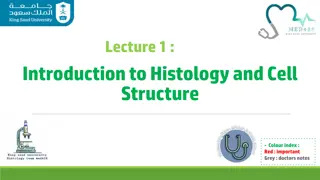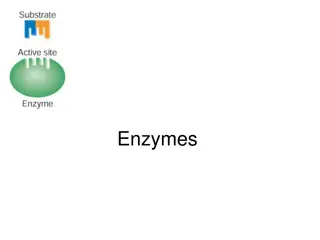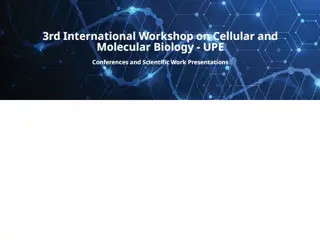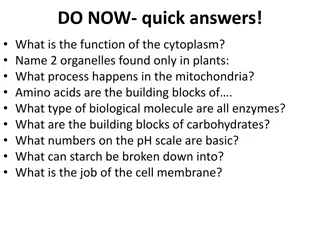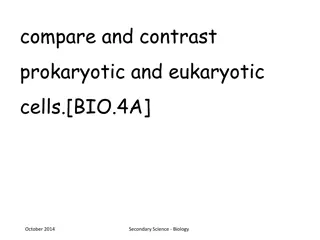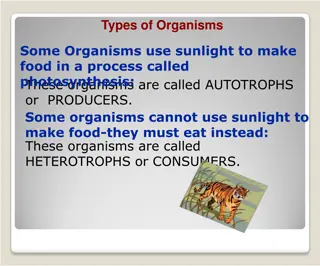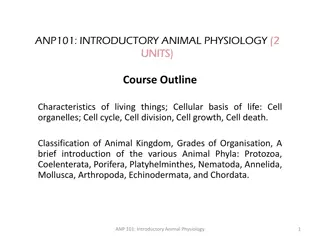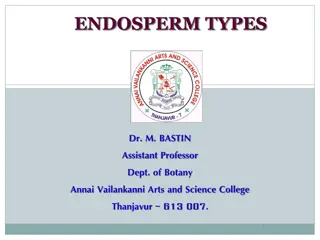Cellular Systems
Cells are the fundamental units of life, responsible for various processes in organisms. Explore the structure, functions, and classifications of cells along with their organelles and key features like the plasma membrane. Discover the importance of cells in maintaining homeostasis and supporting life functions.
Download Presentation

Please find below an Image/Link to download the presentation.
The content on the website is provided AS IS for your information and personal use only. It may not be sold, licensed, or shared on other websites without obtaining consent from the author.If you encounter any issues during the download, it is possible that the publisher has removed the file from their server.
You are allowed to download the files provided on this website for personal or commercial use, subject to the condition that they are used lawfully. All files are the property of their respective owners.
The content on the website is provided AS IS for your information and personal use only. It may not be sold, licensed, or shared on other websites without obtaining consent from the author.
E N D
Presentation Transcript
CELLULAR SYSTEM BY- MEGHANA M PATEL LECTURER IN DEPARTMENT OF BIOMEDICAL ENGINEERING GPG AHMEDABAD
OUTCOMES Define cell. Structure and function of cell membrane and nucleus. Structure and function of cell organelles- cytoplasm, endoplasmic reticulum, lysosomes, Golgi apparatus, mitochondria, ribosomes.
CELL Cells are the basic building blocks of all living things. The human body is composed of trillions of cells. A cell is defined as the smallest, basic unit of life that is responsible for all of life s processes. Robert Hooke was the first Biologist who discovered cells. All organisms are made up of cells. They may be made up of a single cell (unicellular), or many cells (multicellular). Cells are the building blocks of all living beings. They provide structure to the body and convert the nutrients taken from the food into energy. Cells are complex and their components perform various functions in an organism. They are of different shapes and sizes, pretty much like bricks of the buildings. Our body is made up of cells of different shapes and sizes. Cells comprise several cell organelles that perform specialized functions to carry out life processes. Every organelle has a specific structure. The hereditary material of the organisms is also present in the cells.
CELL FUNCTIONS To respond to changes in its environment. To grow and develop across its lifespan. To be able to reproduce To be able to have metabolism. To be able to maintain homeostasis, or keep its internal environment the same regardless of outside changes.
CELLS ARE PRIMARILY CLASSIFIED INTO TWO TYPES EUKARYOTIC CELLS Eukaryotic cells have a nucleus within the membrane large and organisms. fungi, plants, animals eukaryotic cells. Examples animal cells. PROKARYOTIC CELLS Prokaryotes are single- celled organisms. enclosed nuclear and complex Protozoa, There is no nucleus, or any other membranes organelles. form internal or and have all Bacteria are example of prokaryotic cells. plant and
CELL ORGANELLES Cell membrane Nucleus Cytoplasm Endoplasmic reticulum Lysosomes Golgi apparatus Mitochondria Ribosomes Cytoskeleton Cytosol
PLASMA MEMBRANE The plasma membrane separates the cell from the outside environment. It comprises specific embedded proteins, which help in the exchange of substances in and out of the cell.
NUCLEUS NUCLEUS The nucleoplasm enclosed within the nucleus contains DNA and proteins. The nuclear envelop consists of two layers- the outer membrane and the inner membrane. Both the membranes are permeable to ions, molecules, and RNA material. Ribosome production also takes place inside the nucleus.
GOLGI APPARATUS It is made up of flat disc-shaped structures called cisternae. It is absent in red blood cells of humans and sieve cells of plants. They are arranged parallel and concentrically near the nucleus. It is an important site for the formation of glycoproteins and glycolipids.
MITOCHONDRIA These powerhouse of cells because they produce energy. It consists of an outer membrane and an inner membrane. membrane is divided into folds called cristae. They help in the regulation of cell metabolism. Mitochondria are complex organelles that convert energy from food into a form that the cell can use. They have their own genetic material, separate from the DNA in the nucleus, and can make copies of themselves. are also known as The inner
ENDOPLASMIC RETICULUM
ROUGH ENDOPLASMIC RETICULUM Function: The endoplasmic reticulum (RER) which consists of ribosomes on its surface is known as the rough endoplasmic reticulum. So it is also called the granular endoplasmic reticulum. RER is present in the cells which are involved in the active transport of protein as well as in the synthesis of enzymes. It includes: Acinar cells of the pancreas Plasma cells Goblet cells Cells of endocrine glands It involves the synthesis, folding, and modification of proteins.
ORGANELLE & FUNCTIONS Organelle Function Factory part Room where the blueprints are kept Nucleus DNA Storage Mitochondrion Energy production Powerplant Accessory production - makes decorations for the toy, etc. Smooth Endoplasmic Reticulum (SER) Lipid production; Detoxification Protein production; in particular for export out of the cell Rough Endoplasmic Reticulum (RER) Primary production line - makes the toys Protein modification and export Golgi apparatus Shipping department Lipid Destruction; contains oxidative enzymes Peroxisome Security and waste removal Lysosome Protein destruction Recycling and security
